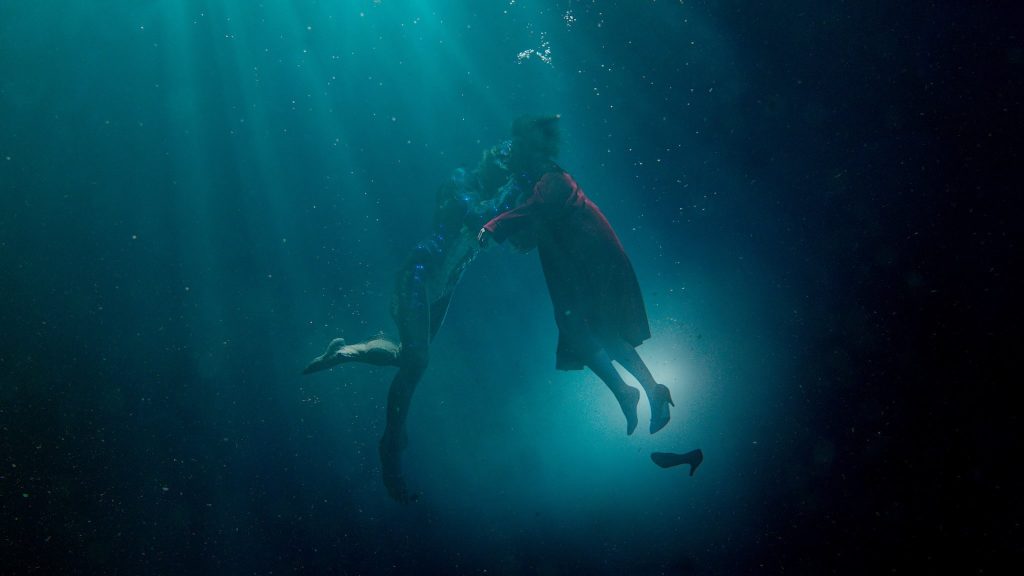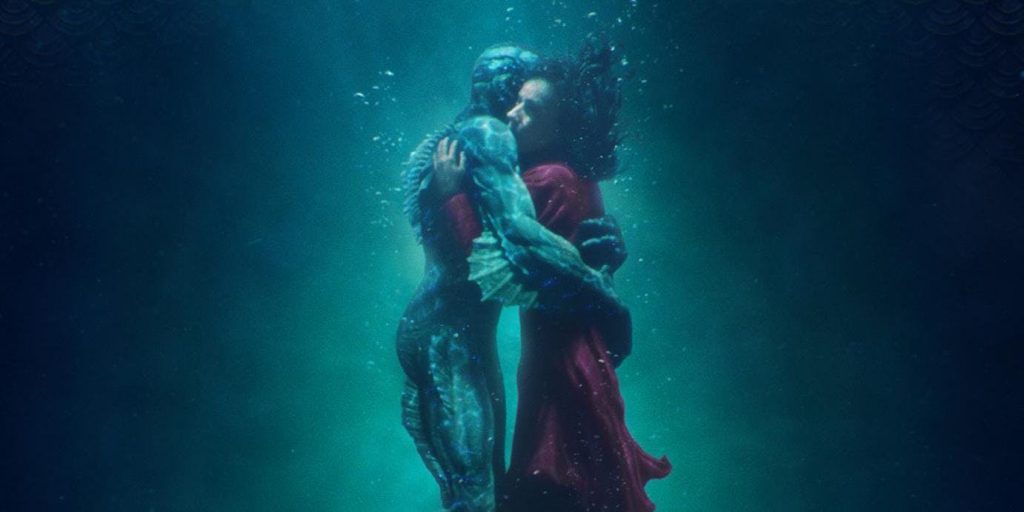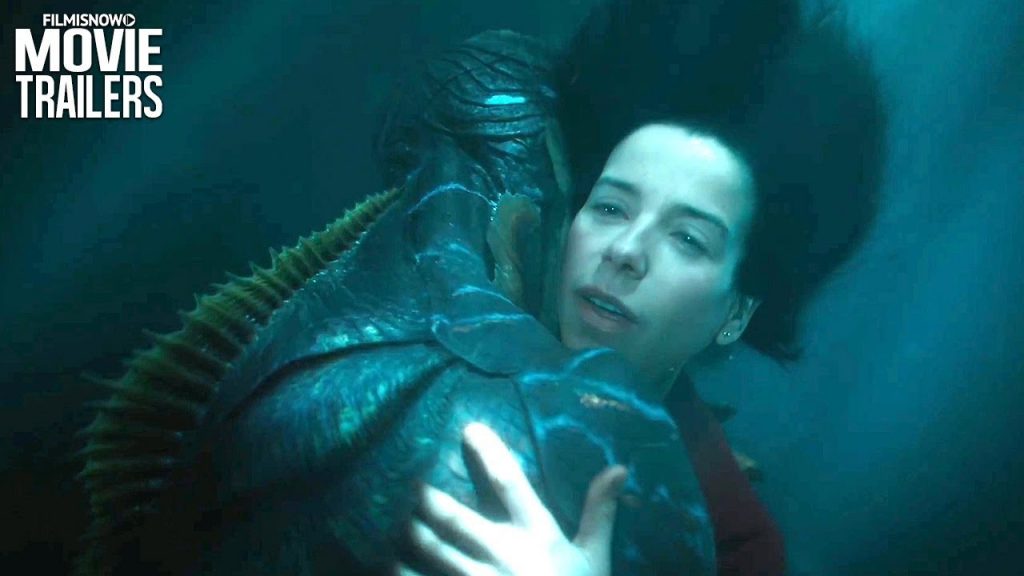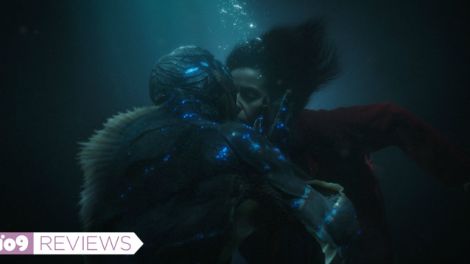
In this scene, the development of inter-species love between the film’s main characters, Eliza and the amphibian-man, culminates in their under-water embrace as the amphibian-man magically gives Eliza gills. This scene blurs the human-animal distinction as both individuals are now cross-species and it subverts the hierarchical binary between humans and animals through their cross-species love which is represented as beautiful and romantic through their underwater embrace. The magical occurrence of Eliza acquiring gills is rendered plausible to viewers because the film is part fantasy, enabling species identity to not be represented as stable and distinct being, but rather as a spectrum between human and nonhuman, with Eliza becoming more animal. Through gifting Eliza with gills, the amphibian man acts as a God, undermining the binaries of man/God and human/animal through embodying all three.

Del Toro presents their inter-species love as the film’s primary message through ending upon an extended sequence of shots of their embrace, using close-up to focus on their mutual gaze and loving facial expressions. The scene is overtly framed within conventional romance and fairy-tale genres through beautiful piano music, the kiss and embrace between Eliza and the amphibian-man, and Giles’ voiceover which tells us that he believes they ‘lived happily ever after’. This subversively frames their inter-species relationship within heteronormative Hollywood romance narratives in which a couple are united in the ending; which overcomes normative cultural disgust at inter-species sex, making viewers instead regard this as beautiful and romantic through looks expressing deep love. This suggests that rather than a singular, impassable boundary dividing humans and animals, love can transcend species difference, meaning that Eliza feels greater shared understanding with a non-human than an unempathetic human like Strickland. The underwater setting is a common space to set the union of a couple within romance and realist films as it is considered a magical, open space in which those who suffer barriers to being together can express their love, as occurs here. The inclusion of realist features such as this underwater union and romantic features such as their long embrace means that viewers take their relationship seriously as the epitome of an acceptance and celebration of difference through empathetic love. Their relationship represents how those who are excluded from normative society for their perceived otherness (in the film for being black, female or gay) can overcome their isolation through accepting one another’s difference (including species difference) meaning that they can experience fulfilling love.

The mise-en-scene is empty apart from them and the water, representing their total absorption in one another. Eliza’s red coat and shoes symbolise her sexual desire for the amphibian man, yet this desire does not seem bestial but part of her deep-felt love, which is expressed through the looks expressing shared understanding between them. In a shot during their embrace we only see Eliza’s face from behind the amphibian man’s shoulder, making the viewer focus on her facial expression which reveals her overwhelming love.

Thus, the inter-species relationship depicted involves deeper love than is felt between most humans. The amphibian-man acts in a recognisably romantic manner, gently caressing Eliza’s neck and slowly kissing her. This reveals that love is not exclusive to humans, as certain humans like Strickland may not feel love, while non-humans do, which subverts the human-animal distinction based upon ‘human’ characteristics which are absent in animals. However, the fact that for their relationship to be perceived as romantic love the amphibian-man must act in a conventionally human manner reveals how society has an anthropocentric viewpoint in which only human behaviour not the behaviours of the animal other is seen as loving.

As throughout the film, their love is represented through looks and touch, meaning that their mutual inability to speak does not impede their communication. Mutual understanding is better achieved through their extended gaze upon one another and their long embrace than speech could, meaning that animals’ inability to speak is not represented as an insurmountable barrier to inter-species understanding, as it is often regarded. Significantly, Eliza’s scars from the removal of her voice box transmute into gills, representing how her muteness which was regarded as making her less-than-human has transformed into an animal capability which humans do not have. This undercuts the discourse of species, in which animals are defined through non-possession of ‘human’ characteristics. The anthropocentric perspective that human capabilities are more valuable than animal capabilities is overturned, as for Eliza breathing underwater is more valuable than speaking. This healing of scars symbolises how the amphibian-man helps Eliza to overcome her childhood trauma of abandonment through loving her and not being aware of her inability to speak. Del Toro uses the conventional representation of animals in films as silently offering emotional support to traumatised people, but utilises this normative animal representation to subvert the human-animal distinction through representing a cross-species sexual relationship in which Eliza becomes more animal.